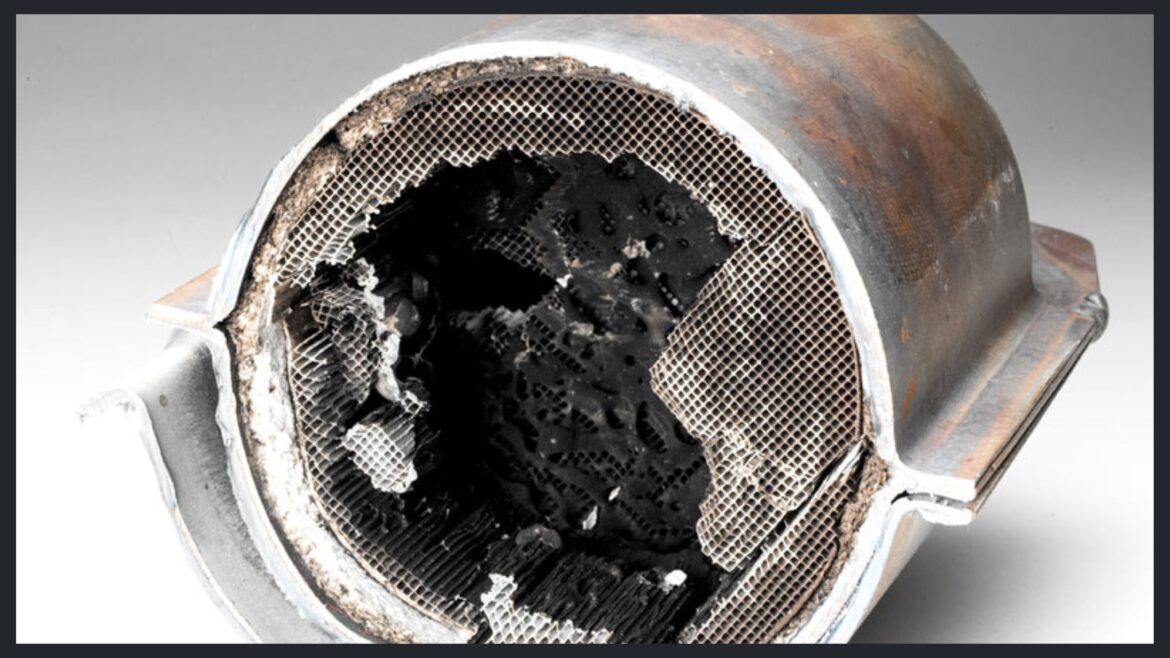
Symptoms of a Dirty Catalytic Converter
Is your car having trouble accelerating? Does your car smell like rotten eggs? If you have an older car with an original catalytic converter, cleaning it may help freshen up the smell and get some power.
What is a catalyst?
A catalytic converter is an exhaust device that converts many harmful exhaust gases into safer alternative gases. For example, carbon monoxide and unburned hydrocarbons are converted into carbon dioxide (the same stuff we breathe out) and water.
Catalytic converters contain several precious metals intended to speed up the breakdown of these toxic gases. Why do catalytic converters need to be cleaned or replaced? Over time, carbon builds up in the engine due to incomplete combustion. Over thousands of kilometres of driving, some of this carbon also deposits in the exhaust system.
Catalytic converters are particularly susceptible to carbon deposits, and these deposits can clog or reduce the efficiency of the catalytic converter.
Symptoms of a dirty catalytic converter
Check engine light
Catalytic efficiency is measured using two oxygen sensors, one before and one after the catalytic converter. If the signals from the two O2 sensors do not match what the ECU expects, one of these codes may be issued. Below is a list of common catalytic converter codes. Codes related to “catalyst efficiency” may require the catalytic converter to be cleaned or replaced.
1. Bank 1 catalyst codes: P0420, P0421, P0422, P0423, P0424, P0425, P0426, P0427, P0428, and P0429.
2. Catalyst codes for bank 2: P0430, P0431, P0432, P0433, P0434, P0435, P0436, P0437, P0438, and P0439.
Weak acceleration
A clogged catalytic converter creates a restriction in the exhaust system. Any restriction in the exhaust system creates backpressure, which reduces acceleration. Reduced acceleration occurs because the vehicle has to work harder to push exhaust gases through the system. If you feel like your car is significantly slower than it used to be, try cleaning or replacing your catalytic converter.
Rotten Egg Smell
If you notice a foul odor coming from the exhaust, it’s a sign that your catalytic converter needs attention.
Should I clean or replace my catalytic converter?
There are a few things to consider when determining whether you should clean or replace your catalytic converter. Age of your vehicle
These metals break down over time as they play a role in keeping the environment clean. If your catalytic converter has more than 100,000 miles on it, you should probably replace it instead of cleaning it.
Your Warranty
If your vehicle has a valid warranty, check the terms of your warranty. Working on your catalytic converter yourself may void part of your vehicle’s warranty and may result in your warranty claim being denied.
Laws in Your Area
There are many laws regarding emissions control devices, and these laws vary from state to state and country to country. If you are removing your catalytic converter, it is a good idea to check your local laws to make sure you will pass inspection.
You can’t just remove your catalytic converter easily either; if it’s missing, you will fail in almost every state that requires inspection.
How to Clean a Catalytic Converter (with Additives)
The following products are easy and relatively inexpensive to try: In general, it doesn’t hurt to try an additive before moving on to more invasive procedures such as a thorough cleaning or replacement.
Suction Sprays
There are several products on the market that can clean your catalytic converter without unscrewing the exhaust. An example of this is Liqui Moly 8931 Catalyst System Cleaner.
Liqui Moly is a trusted name in the automotive industry, offering products ranging from engine oils to heavy-duty cleaners. Simply spray the catalytic converter cleaner into the intake tract at short intervals while the engine is running at moderate speeds (2,000-3,000 rpm). For best results, follow the directions on the can.
Fuel Additives
There are also fuel additives on the market that claim to clean catalytic converters. Try products like Cataclean or a fuel system cleaner like STP Ultra 5 in 1 Fuel System Cleaner and Stabilizer.
These products are easy to use. Just pour them into your gas tank when the tank is at the specified fuel level (there’s often about 4 gallons in the tank). Typically, to get the most out of your product, you should empty your gas tank as much as possible between refills. For best results, read the product instructions.

